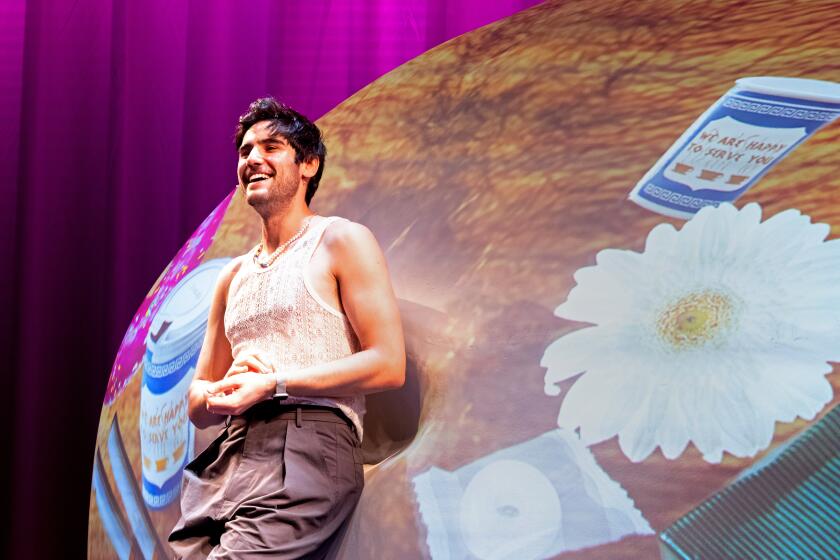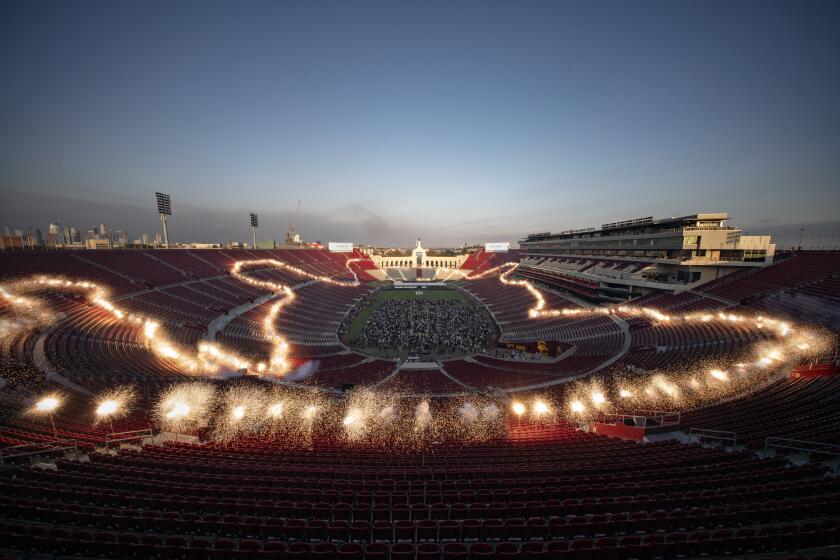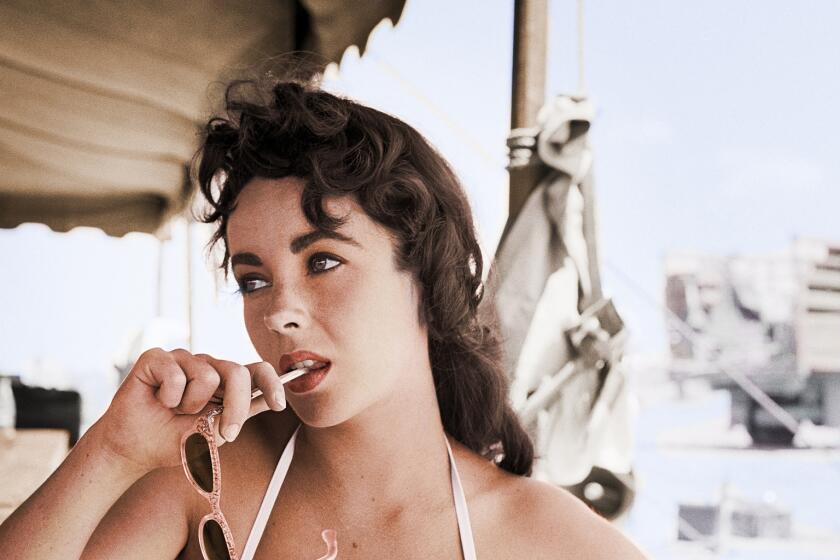Climb Every Mountain, Milk Every Scene : THE DIVINE SARAH <i> By Arthur Gold and Robert Fizdale</i> , <i> (Alfred A. Knopf: $30; 337 pp.)</i>
In the spring of 1923 an actress lay dying in her Paris apartment. Below her window a crowd gathered, waiting for the final bulletin.
“Are they journalists?” she murmured.
A friend acknowledged that some of them were.
“Then I’ll keep them dangling.”
It was typical of Sarah Bernhardt to milk any part, even her own death scene. In a sense, she had been onstage since early childhood, when Mama sent little Sarah off to a convent school. There she was to acquire “refinements.” They would be used to attract a rich lover. Youle Bernard knew all about such things: The once impoverished Jewish girl had arrived in Paris with nothing but her brains and a few sous; by the time Sarah was born, paternity unknown, Youle had launched herself on a new vocation. The bed became her office, and soon the courtesan’s salon included Dumas pere , Rossini, and the Baron Hippolyte Larrey, personal physician to Napoleon III.
Yet all this was as nothing to the climb that Sarah made, scrambling, clawing, biting her way to the center spotlight and permanent possession of fame. The story has been told many times, most notably in Cornelia Otis Skinner’s 1967 entertainment, “Madame Sarah.” But the duo-pianists and dual biographers, Robert Fizdale and the late Arthur Gold, had access to unexplored archives and memoirs. Theirs is the most complete, and most compelling version to date.
After an indifferent scholastic career, Sarah entered the Conservatory of Music and Drama, determined to be an actress. All mademoiselle had going for her was an indomitable will. Her godfather watched an early performance and offered his candid review: “Well, you’ve made a fine mess. Why be so stubborn about the theater? You’re too thin, too small. Your face is nice close up, but ugly from a distance. Besides, your voice doesn’t carry.”
After some training, and a slight readjustment in the spelling of her surname, Sarah’s temperament and artistry began to burn through. She was good enough to get hired by the Comedie Francaise--and bad enough to be dismissed when she wrangled with an older actress. No matter; Sarah went out on her own, acquiring some lovers and gathering theatrical experience in independent productions. A reputation gradually began to adhere as more and more ticket holders found themselves on her waif length. While the impresarios watched, she developed from an undernourished novice into a woman of grand passion and excessive gestures, ideal for the 19th-Century stage.
Gold and Fizdale are dazzled by their subject, but not hypnotized. They wisely point out that the Divine Sarah might be hooted off the boards today. Yet in the 1880s, she created an appropriate style that “mirrored the sentiments, humors, anxieties, gestures, and social inflections of her time. If she wept and fainted, it was because women of her day were given to weeping and fainting. And it was nineteenth-century Paris, Victor Hugo’s ‘rouged and terrible city’, that shaped her dramatic gifts.”
Hugo himself had something to do with that shaping; the imperious old man was one of Sarah’s amours. So was Dumas fils; the artist Gustave Dore; Edmond Rostand, author of “Cyrano De Bergerac”; and, of course, innumerable colleagues. For Sarah, fidelity was inconceivable. She liked to play one suitor off against another, and the inevitable breakups occurred with maximum frenzy and a blizzard of sadomasochistic love letters:
“You’ve tortured me with weapons that I myself put in your hands. You used my affection and my love like a flag carried into battle. . . . “
“I fully realize that your will is stronger than mine, since it allows you to make me suffer so. . . . “
“Make me your slave, your possession, but keep your love for me.”
In an epoch mercifully free of television, People magazine and checkout-counter tabloids, Sarah nonetheless made her presence and her peccadilloes known everywhere. By the late 1870s, her art and affairs had become components of the Parisian atmosphere. Henry James, then visiting the continent, was moved to appraise the phenomenon: “Mademoiselle Sarah . . . is simply, at present, in Paris, one of the great figures of the day. It would be hard to imagine a more brilliant embodiment of feminine success.”
From then on, Sarah journeyed from country to country, and she triumphed everywhere. The achievements of La Bernhardt became the standard against which every actress measured herself. Her flamboyance escalated every year. She kept a koala bear, an opossum, a wallaby. She was probably one of the first women to ascend in a balloon, and surely the only star to play both Ophelia and Hamlet in separate productions.
Actress Ellen Terry remembered her in those days as “transparent as an azalea, only more so; like a cloud only not so thick. Smoke from a burning paper describes her more clearly!”
En route, she had acquired a husband of no consequence, and then a rather ineffectual son who performed one great service: He made Sarah a grandmother in her middle years. She took a perverse joy in this new status. Sarah played Joan of Arc, and, her biographers report, when the heroine was asked to state her age, “she slowly turned from her inquisitors to face the audience and proudly proclaimed, ‘Nineteen!’ Needless to say, she brought down the house.”
That phrase embodies all that is appealing--as well as all that is unwanted about “The Divine Sarah.” Every incident is reported with brio, but almost every page is clotted with bromides. Sarah is not merely received with enthusiasm, she has to bring down the house. Theaters are seldom full, they are packed to the rafters. Visiting backstage, the Prince of Wales does not start a fashion, he gives the cue to the smart set.
Still, stale rhetoric cannot obscure a headlong narrative. Who could resist the leading lady who appeared in leading roles long after the amputation of a leg? Who, well into an infirm old age, took on the newfangled medium of silent film? Who, regarding a much younger actress, said--and meant--”that is the way I will look some day”? Who could upstage Shaw and Wilde, become a character in the novels of Marcel Proust, and bewitch Lytton Strachey? (That rigid critic of the Victorians lost all restraint at Sarah’s performance of “Phaedre”; to see her act was “to look, if only for a moment, upon eternal light”).
At the Bernhardt funeral, three days after Sarah had kept the journalists waiting, the streets of Paris were lined 10 deep as the coffin made its journey to Pere-Lachaise cemetery. “There were no speeches at the grave site,” note Gold and Fizdale; “there was one heartfelt cry. It came from a young actress who uttered four words . . . ‘Immortals do not die.’ ” The Divine and her admirers (and biographers) had a habit of exaggeration. But given her enduring legend and life--the two are inseparable--that may be the truest review Sarah Bernhardt ever provoked.
More to Read
The biggest entertainment stories
Get our big stories about Hollywood, film, television, music, arts, culture and more right in your inbox as soon as they publish.
You may occasionally receive promotional content from the Los Angeles Times.










